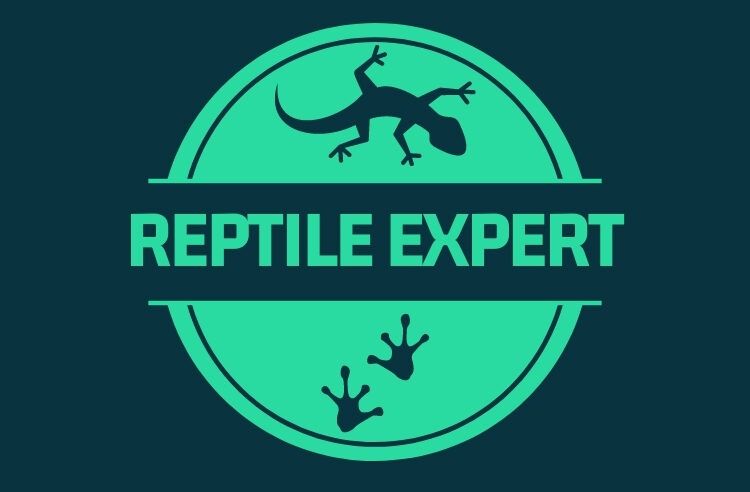Unlike many other pets, reptiles will spend a large part of their lives in their enclosures or terrariums and in some instances, may have been caught in the wild- therefore, it is vital to give proper thought to the design and set-up of your pet reptile’s environment. Not only will this make your reptile healthier and happier, it can make it easier to care for your pet and provide a more attractive platform for you to watch it going about its daily business.
Key Features of a Reptile’s Environment
To keep your reptile in optimum health and free from stress, it is essential that you satisfy the following points:
Thermal Gradient – as reptiles are “cold-blooded” and cannot generate their own body heat, they have to rely on external temperatures to regulate their internal temperature and manage their metabolism. In the wild, they have the choice of moving into an area with the temperature they need (e.g. sun or shade), changing locations and adjusting temperature as necessary. In captivity, therefore, they need to be provided with an artificial thermal gradient. This is particularly important to ensure the maintenance of certain key processes such as digestion of food.
Thermal gradients can be created by placing heat sources at one end of the enclosure and using a thermometer to accurately gauge the temperature. There are several ways to heat parts of the enclosure. Overhead heating (such as incandescent lamps) obviously resemble nature more closely but undertank heating (such as heating pads) can also be very effective. You can also use ceramic heating elements which are a very powerful source of heat. No matter, what you use, always shield the reptile from the heat source and never use anything which may come into direct contact with the reptile, such as the “hot rocks” commercially sold in pet stores, as these can give a nasty burn. In general, temperatures can be dropped at night to mimic conditions in the wild, although a night-time minimum temperature must still be maintained.
Basking Spot – this is usually part of the thermal gradient, providing the top range of temperatures for your particular reptile species. It is usually provided by an incandescent lamp over a specific spot at one end of the enclosure (e.g. on some rocks or driftwood) and make sure that the wattage is appropriate for your reptile.
Lighting – Aside from heat, many reptiles also need sufficient lighting and some need a very specific type of UV light to thrive. These include all turtles and tortoises and the majority of lizards. Without exposure to UV light, these reptiles cannot produce Vitamin D3 effectively, leading to problems with calcium metabolism. By exposing the skin to natural sunlight or an artificial UV light source, the reptiles can produce the necessary Vitamin D3 within their bodies. Supplementation of Vitamin D3 via the diet is possible but not as effective. Since sunlight is a scarce resource in Britain and in any case, the crucial UVA And UVB rays are blocked by glass – most reptile keepers will need to invest in an artificial UV source, easily available in pet stores and from reptile suppliers.
Even if your reptile does not need UV light to maintain health – such as many snakes and nocturnal lizards – it is still important to provide a regular night-day cycle, similar to that in the wild, to prevent the animal experiencing stress.
Humidity – Humidity levels are another key factor in reptile health and maintaining the right levels can be done by either misting the enclosure regularly with water or providing a “humidity retreat” which can be as simple as a plastic container with a hole cut for access, lined with damp sphagnum moss. This will be especially appreciated by your reptile during the shedding period.
Hiding Places – Most reptiles feel more secure if they have plenty of places to hide in, ideally a couple at each end of the thermal gradient. These can be commercially-manufactured reptile caves found in pet stores or just simple hiding spots created by bits of wood or even cardboard.
Substrate – It is important to familiarise yourself with the preferred substrate for your reptile species and to avoid anything which may be accidentally ingested and cause intestinal blockages. Often Astroturf is a good choice, as is commercially available reptile bark. In all case, choose substrate and bedding that is easy to clean and replace. You can also add some tropical moss, bark chunks or even leaves to provide some interest, providing that they are thoroughly cleaned and sterilised before being introduced to the terrarium.
Hygiene – Good, regular hygiene is crucial, not only to maintain appearances but to prevent disease. Make sure all uneaten food is regularly removed and fresh water is replaced often, especially as reptiles often like to defecate in their water dish. Good ventilation will also keep things clean and healthy.
Plants & Other Features – Unless they are particularly destructive, most reptiles will appreciate some interesting features in their environment, such as upturned flower pots, stones, branches, hollow logs and vines, for them to scamper through, climb on and hide in. Make sure that anything you put in has been thoroughly cleaned and sterilised and make sure also that any large objects are stable and unlikely to topple over and crush your reptile underneath.
Plants make a great addition but it can be a challenge to choose the right types and to maintain them. A lot of reptiles will eat, damage or uproot live plants and you may find yourself having to replace them frequently. For this reason, many people often choose to use artificial plants instead. Also, if your pet is likely to be sampling the plants, it is important to make sure that they are of the non-toxic variety.
In addition, it is always nice to have a terrarium or enclosure that looks natural and closely mimics the reptile’s natural environment.
